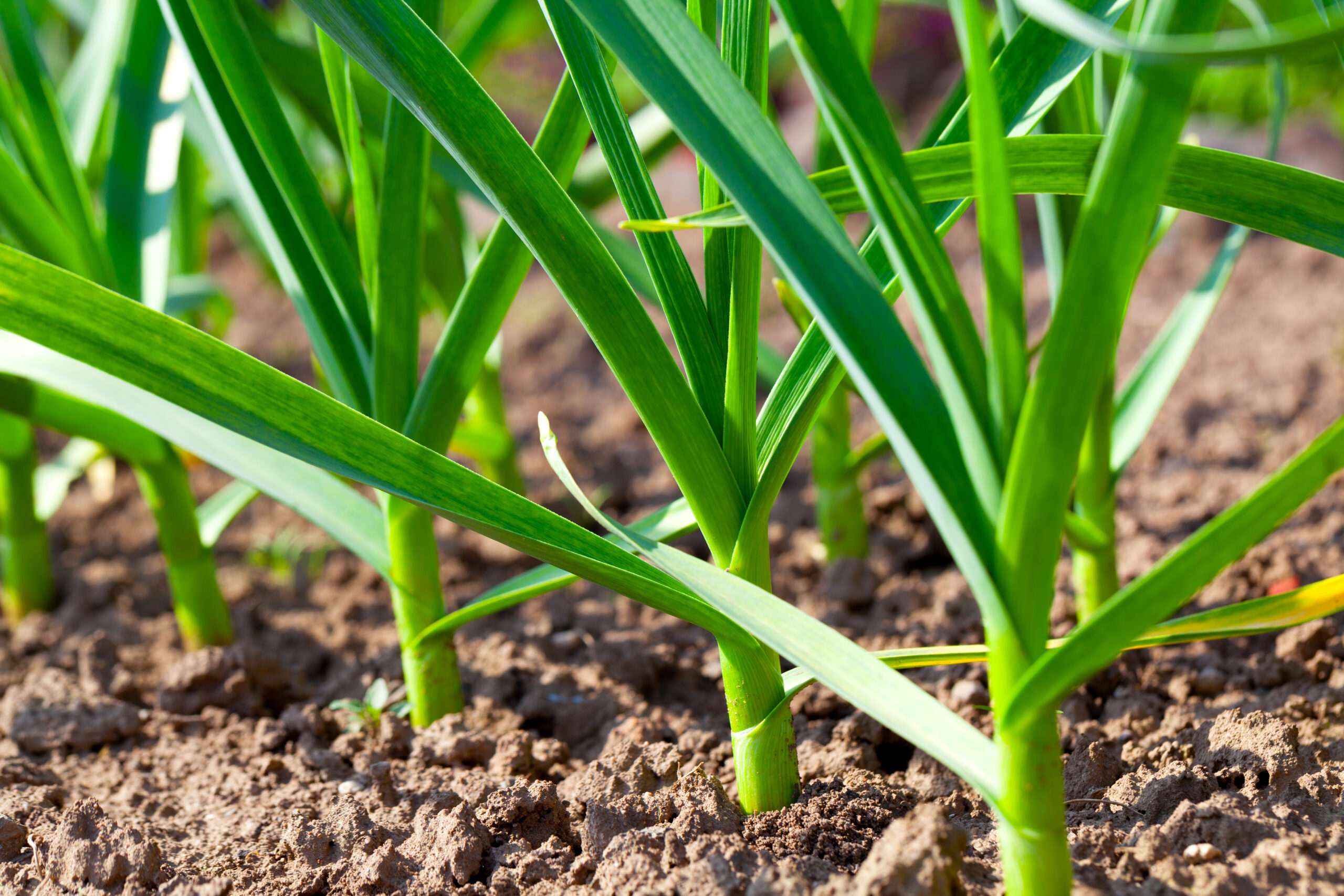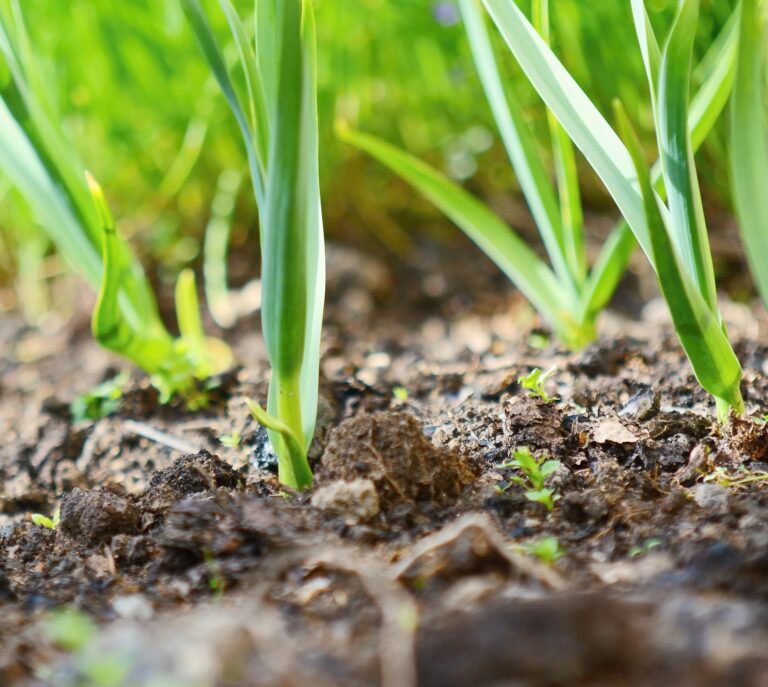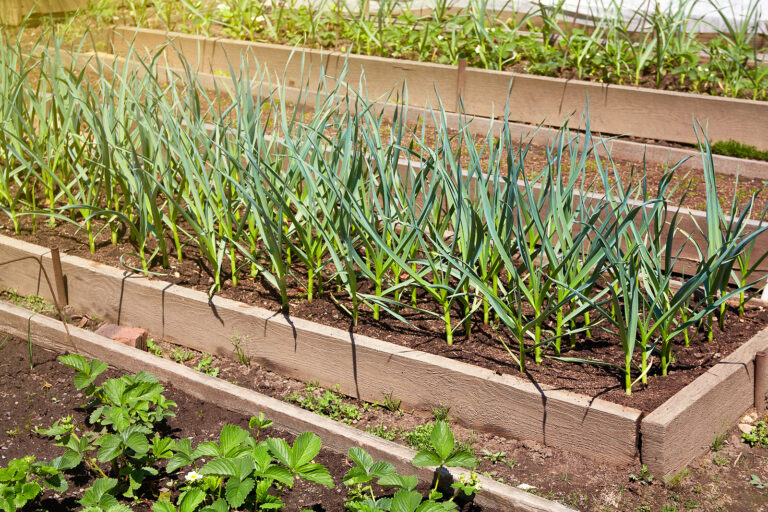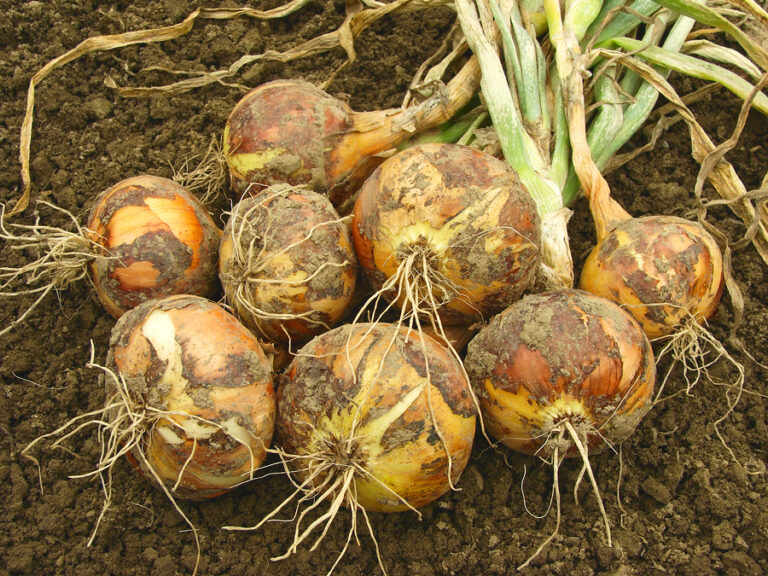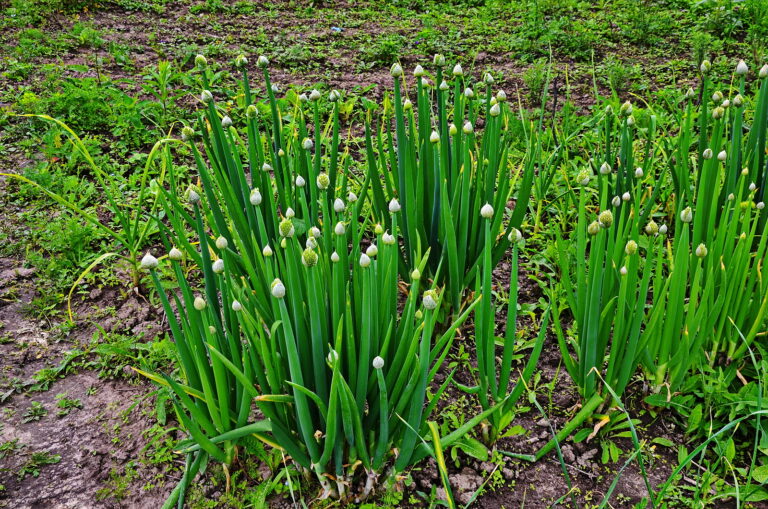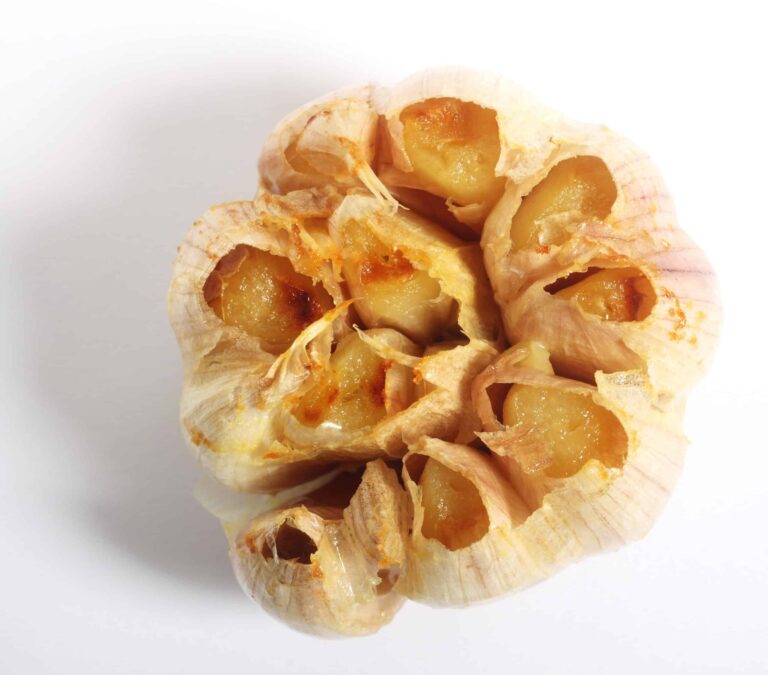How to Water Garlic the Right Way
Proper watering is one of the most important factors for healthy, productive garlic. Too little water stunts growth, while too much can lead to rot and disease. After over 30 years of growing garlic in California’s Central Valley and Sonoma Valley, I’ve refined a watering approach that consistently produces large, flavorful bulbs.
Understanding Garlic’s Water Needs
Garlic is a shallow-rooted crop, which makes consistent moisture essential, especially during bulb formation. Key points:
- Young plants: Need regular watering to establish roots in fall and spring.
- Bulb development: Moisture is critical from spring until about 2–3 weeks before harvest.
- Dormant period: Water sparingly once leaves yellow and the plant approaches harvest.
🌱 Gardener’s tip: I use a soil thermometer and moisture meter to monitor conditions, preventing both over- and under-watering.
How Often to Water Garlic
- Fall and winter (cool, wet climates): Garlic usually requires minimal supplemental watering if rainfall is sufficient.
- Spring (active growth): 1–2 inches of water per week, either through irrigation or deep hand watering.
- Avoid standing water: Garlic does not tolerate soggy soil; ensure proper drainage.
Watering Techniques
- Drip Irrigation: Delivers water directly to the root zone, minimizing disease risk.
- Soaker Hoses: Good for even coverage in raised beds or wide rows.
- Hand Watering: Useful for small plots or container-grown garlic.
🌱 Tip: Water early in the day so foliage dries before evening, reducing fungal disease risk.
Mulching for Moisture Management
- Straw or shredded leaves retain soil moisture, reduce evaporation, and regulate temperature.
- Mulch also suppresses weeds, which compete for water.
My Gardener’s Note
In Sonoma Valley, I water garlic once a week during active spring growth, adjusting for rainfall. I always stop watering 2–3 weeks before harvest to allow bulbs to dry and cure properly, reducing the risk of rot.
🌱 Bottom line: Water garlic consistently, especially during bulb formation, but avoid waterlogging. Combine proper irrigation with mulch for best results.
Garlic Growing Hub
Start here: The Ultimate Garlic Growing Guide: From Seed to Harvest
🌱 Garlic Planting & Timing Clusters
- Garlic Plant Starting Tips: How to Get Going
- When to Plant Garlic: Fall vs. Spring Compared
- Garlic Planting Calendar by Zone (Month-by-Month Guide)
- Ideal Soil Temperature for Planting Garlic and Why It Matters
- Climate Guide: Growing Garlic in Warm vs. Cold Regions
🧄 Garlic Types & Varieties Clusters
- Softneck vs. Hardneck Garlic: Key Differences for Gardeners
- Best Softneck Garlic Varieties for Home Gardens
- Best Hardneck Garlic Varieties for Flavor and Storage
- Rocambole Garlic: What It Is and How to Grow It
- Elephant Garlic: Tips for Planting and Harvesting Giant Bulbs
🌿 Growing & Care Clusters
- Proper Garlic Spacing for Bigger Bulbs
- How to Water Garlic the Right Way
- Fertilizing Garlic: Feeding Tips Bigger, Healthier Bulbs
- Essential Garlic Care: From Planting to Harvest
- Best Companion Plants for Garlic (And What to Avoid)
- How to Grow Garlic in Containers: Step-by-Step Guide
🐛 Pests & Disease Clusters
🌾 Harvest & Storage Clusters
- How to Tell When Garlic Is Ready to Harvest
- How to Harvest and Store Garlic
- How to Cure Garlic for Long-Term Storage
- Best Ways to Store and Preserve Garlic at Home
🍳 Kitchen & Use Clusters
- Garlic Cooking and Severing Ideas for Your Harvest Table
- Fresh Garlic vs. Stored Garlic: Flavor and Cooking Differences
- Garlic Scapes: What They Are and How to Use Them
- Leeks vs. Green Onions vs. Garlic: What’s the Difference

